I'm trying to implement the homogeneous transformation from the disparity image to the virtual disparity image, following the paper of Suganuma et. al. "An Obstacle Extraction Method Using Virtual Disparity Image". After doing the matrix computations described in the paper, I reach a global homogeneous transformation matrix that describes just a translation of -27.7 in the direction v, which makes sense.
Now, to make this transformation, I implemented a loop in MATLAB:
virtual_disparity=zeros(size(disparityMap));
%Homogeneous vector of a point of the disparityMap U=[u/d v/d 1/d 1]' (4x1)
U = zeros(4,1);
U_v = zeros(4,1);
for i=1:size(disparityMap,1) %Rows-->y
for j=1:size(disparityMap,2) %Cols-->x
d = disparityMap(i, j); % (i,j)-->(cols,rows)-->(y,x)
U = [j/d i/d 1/d 1]'; % [u/d v/d 1/d 1]'
U_v = B*U; % B is the whole homogeneous transform
U_v = U_v./U_v(4);
u_v_x = U_v(1); %u_v_j
u_v_y = U_v(2); %u_v_i
if((u_v_x>1) && (u_v_x<=size(virtual_disparity, 2)) && (u_v_y>1) && (u_v_y<=size(virtual_disparity, 1)))
virtual_disparity(round(u_v_y), round(u_v_x)) = disparityMap(i, j);
end
end
end
Now, the problem is that the virtual disparity that I get doesn't make any sense, since it doesn't even corresponds with the transformation described in B, which, as I said is:
1.0000 0 0.0000 0
0 1.0000 0.0000 -27.7003
0 0 1.0000 0
0 0 0 1.0000
These are the disparity and the virtual disparity respectively:
I've been rechecking all day long and I don't find the error.


